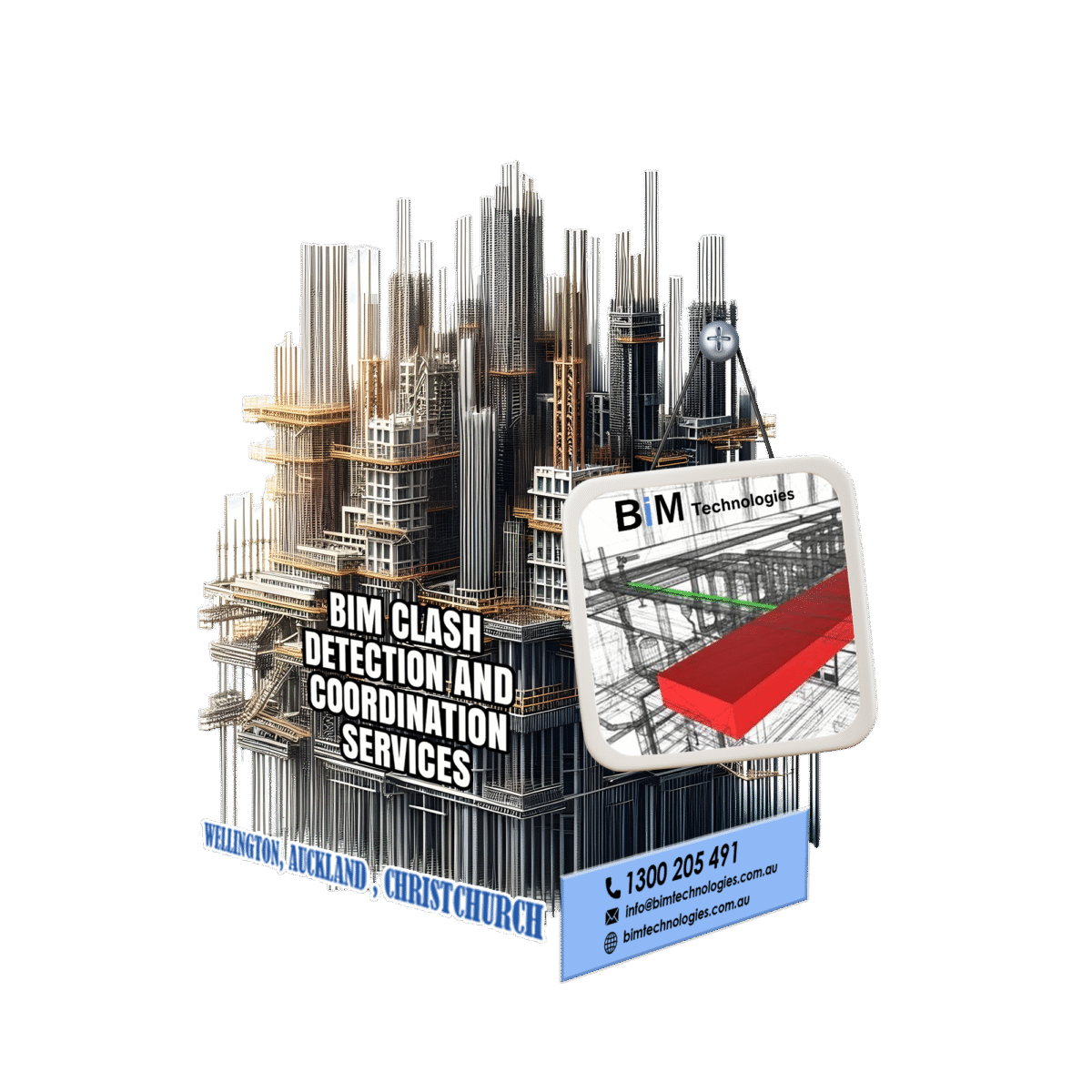In construction, clash detection has become an essential tool for optimizing projects and saving time and money. By leveraging Building Information Modeling (BIM) technology, construction professionals are revolutionizing the way projects are managed by enabling early detection of issues and efficient conflict resolution.
Compared with traditional two-dimensional plan design, BIM provides a more realistic virtual model, but even in such a model, some errors may still be overlooked.
The BIM clash detection and coordination services Wellington, Auckland, Christchurch use these virtual models to analyze conflicts and errors and provide detailed reports to help designers and engineers solve problems in the design stage and avoid greater costs and safety risks in the construction stage.
In this blog, we will explore the importance of clash detection and how applying verification rules further enhances this process.
What is BIM clash detection and coordination ?
BIM clash detection and coordination is one of the main benefits of using BIM technology. It is an automated process of detecting collisions or conflicts between several 3D models. It is an extremely important process for the entire construction industry, for structural engineers, design engineers and architects, as it unites them all and makes their work even more efficient and high-quality.
Understanding Types of Collision Detection :-
In the construction industry, collision is a common and significant problem. Since the design and construction process involves the participation of different professionals, collision conflicts are prone to occur in the architectural design drawings. Once a conflict occurs, it may lead to rework, cost overruns and material waste. BIM clash detection and coordination services in Auckland can solve these problems before they occur.
To make the most of BIM clash detection, you must understand its different forms. Generally speaking, clash detection can be divided into three categories: hard clash, soft clash and 4D clash.
(a) Hard Clash :
These are the most common of the three types of collisions. These occur when two objects occupy the same space, such as a pipe passing through a beam. When hard collisions occur during construction, they usually require redoing, which not only wastes time but also adds a lot of cost to the project.
(b) Soft Clash or Clearance Clash :
Soft collisions occur when an object appears to be fine physically but is a problem. Common examples include HVAC units that do not have enough space for workers to service them, or power lines and water pipes that are too close to each other. These may not cause problems immediately but could pose a risk to occupants in the future.
(c) 4D Collision :
Different from the above two, it does not involve design issues but deals with administrative issues such as scheduling conflicts and delivery errors. For example, since loaders can be equipped with various components, a 4D collision may occur when someone orders a loader with a drill and they need an excavator. These are often the result of communication problems and may cause project time delays.
Application of Verification Rules :-
To optimize the clash detection process, the application of verification rules is essential. Automation in this process allows the identification of relevant clashes, avoiding information overload.
Verification rules define the most appropriate clash detection parameters for the project, ensuring that only relevant information is evaluated. Applying verification rules improves the efficiency of the clash detection process and ensures that issues are resolved before they impact construction.
How does clash detection work ?
In the same BIM environment, architects, design engineers, MEP engineers and other specialists create independent 3D models that can be edited separately from each other, but everyone can see the changes in real-time.
Then all the models are uploaded to another program and the processes of identifying the interferences are launched. These processes are pre-configured by defining the necessary categories between which the program will search for conflicts.
The conflict detection program determines where two independent models intersect and identifies and lists the elements that need to be checked and, if necessary, corrected. This list is then used to generate a collision report for the customer.
The importance of collision detection :-
The main advantage is the unification of all parts of the structure before actual construction. This allows for identifying a large number of errors before construction, and not directly on the construction site or during the operation of the building. This significantly reduces the cost of the entire process and makes it better.
BIM clash detection and coordination services in Wellington significantly improve collaboration not only within the team but also beyond its boundaries. This process helps to quickly and accurately respond to changes in the project and also inform members of another structure or team.
Advantages of Clash Detection and Verification Rules :-
Using conflict detection and checking rules provides several advantages, including :
(a) Accurate engineering design documentation.
(b) Improved coordination and collaboration between design and construction teams.
(c) Automatic conflict resolution.
(d) Simplified and integrated approach to project management.
In short, BIM clash detection and coordination services Christchurch is a fundamental practice for civil construction .
It saves time, reduces costs and improves the quality of projects, becoming an indispensable tool for professionals seeking efficiency and excellence in construction project management. Here, BIM technologies will help you to transform the way we build the world.
To know more about our service, get in touch with us !



